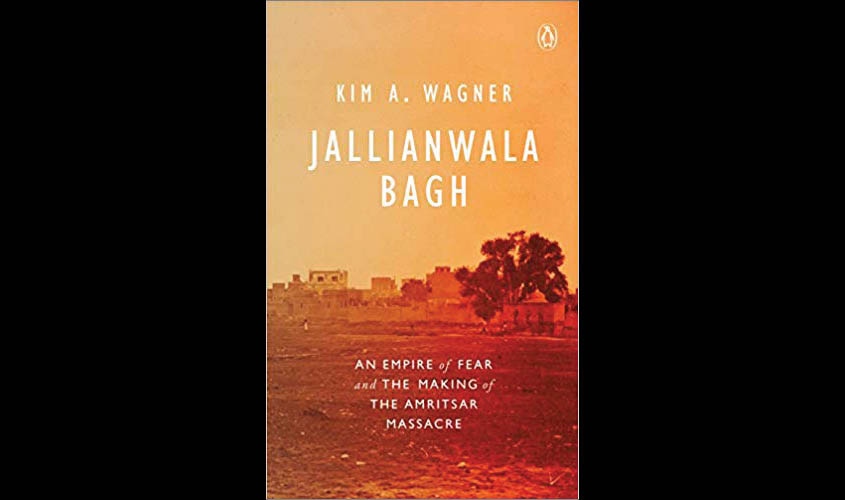The author explores the great divide between the ruler and ruled and the simmering unease among the ordinary people.
During a visit at the Jallianwala Bagh memorial in Amritsar, the mood invariably turns sombre and reflective. How can someone do anything as ghastly as this? Of firing indiscriminately—and almost at point-blank range—on the unarmed and largely peaceful crowd, as the British Indian Army did at Colonel Reginald Dyer’s behest on 13 April 1919. When the firing finally ended, the Bagh had turned into a garden of the dead and even kids as young as three weren’t spared. The official number was 379 dead and 1,100 wounded, but an inquiry carried out by Madan Mohan Malviya and Motilal Nehru that very year put the number at 1,000 dead and 1,500 wounded.
Even more heart-wrenching and mind-boggling are the stories of the survivors and the family members. One such tale is that of Ratan Devi, told with much empathy by Kim A. Wagner in his new book, Jallianwala Bagh: An Empire of Fear and the Making of the Amritsar Massacre. “Like so many others, Ratan Devi had rushed to the Bagh to look for a relative but, by the time she found her husband, in heap of bodies on the blood-soaked ground, there was no one to help her carry him away. Alone in the dark, Ratan Devi pleaded with people in the surrounding houses, but no one came to her aid. And so, she spent the night by the side of her husband’s corpse in what had become a garden of the dead,” writes Wagner as he quotes her saying how she spent the night weeping, chasing away dogs with a bamboo stick, and trying to comfort a dying 12-year-old boy.
In this well-researched book, Wagner explores the experiences of ordinary people and brings out the simmering unease and discontent among them. He displays the great divide between the ruler and the ruled as he brings out the overwhelming support for Dyer’s dastardly act among the British and the Anglo-Indian community. When Dyer left India, the author reminds, he carried with him an ornamental testimonial of the signaturesx of more than 200 people who had been in Punjab in 1919. “Sir, We, the undersigned, desire to express our heartfelt gratitude for the firmness You displayed in the crisis in this Province last April. We deplore the loss of life which occurred, but we believe that it was Your Action which saved the Punjab and thereby preserved the honour and lives of hundreds of women and children,”Wagner quotes the testimonial.
Dyer, too, defended his action when he claimed that he shot “to save the British Raj—to preserve India for the Empire, and to protect Englishmen and Englishwomen”. “I had to shoot. I had 30 seconds to make up my mind what action to take, and I did it,” he said, reminding rather unconvincingly that had he not shot, he and his “little force would have been swept away like chaff”. To the credit of Wagner, the hollowness of Dyer’s argument is exposed with facts and figures.
The book, however, isn’t just about the Amritsar massacre and its victims. It’s also not merely aimed at calling Rudyard Kipling’s bluff who had infamously said, taking his ‘White Man’s Burden’ argument forward, that Dyer “did his duty as he saw it”. The principal premise of the book is that Jallianwala Bagh was less of an exception, as apologists for the Raj would want us to believe. Through Dyer’s act of barbarism, Wagner exposes the history of the British Empire soaked in blood and marked with exploitation and persecution.
This violent, exploitative nature of British colonialism was overlooked by the English people then. Worse, its true nature is still being ignored and, worse, looked at with pride and nostalgia. According to a poll in the UK in 2014, 59% of people thought the “British Empire was something to be proud of” and nearly half believed countries were better off or having been colonised. Wagner’s Jallianwala Bagh punctures such a hollow claim, and herein lies its true relevance. For, the British subjugation of India was “a monstrous crime”, as Shashi Tharoor writes in his brilliant book Inglorious Empire, and any positives were accidental and not intended to benefit Indians. The introduction of the railways in India is a case in point.
In fact, India was at the receiving end of the British presence, both economically and socially. India’s share of the world economy at the start of the 18th century was 23%. When Britain left, it was around 3%. Even the claim that pre-colonial India was a backward society is a myth. Instead, it was a wealthy, educated and had a highly developed banking system.
As for Wagner’s primary assertion that Jallianwala wasn’t an exception during the British rule, one just needs to look at the great Bengal famine in the early 1940s. In Churchill’s Secret War, author Madhushree Mukherjee shows how the “great” man’s prejudice contributed to one of the greatest famines in modern history. London ate India’s bread while India starved, and in 1943 “some three million Indians” died in Bengal alone. Churchill believed it was the fault of Indians for “breeding like rabbits”.
Wagner’s Jallianwala Bagh is a timely book, coming out as it does on the 100th anniversary of the massacre. It is also relevant in the time of the Brexit, when Britain is often being reminded of its global aspirations and there’s growing nostalgia for the benign Raj which, in reality, was never the case.

